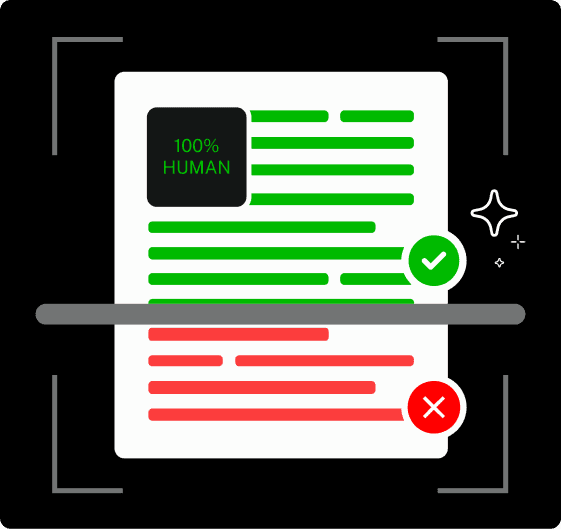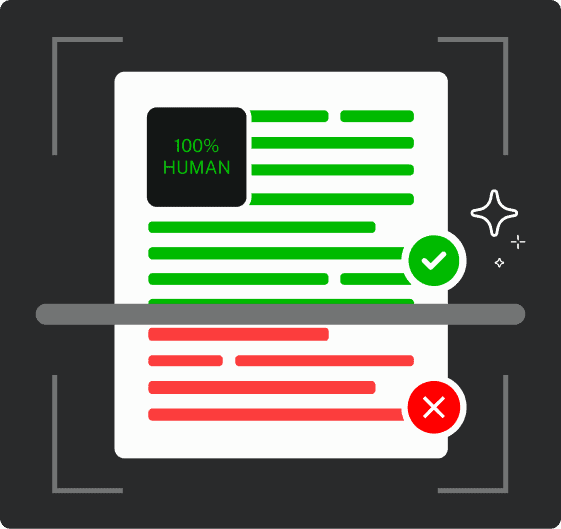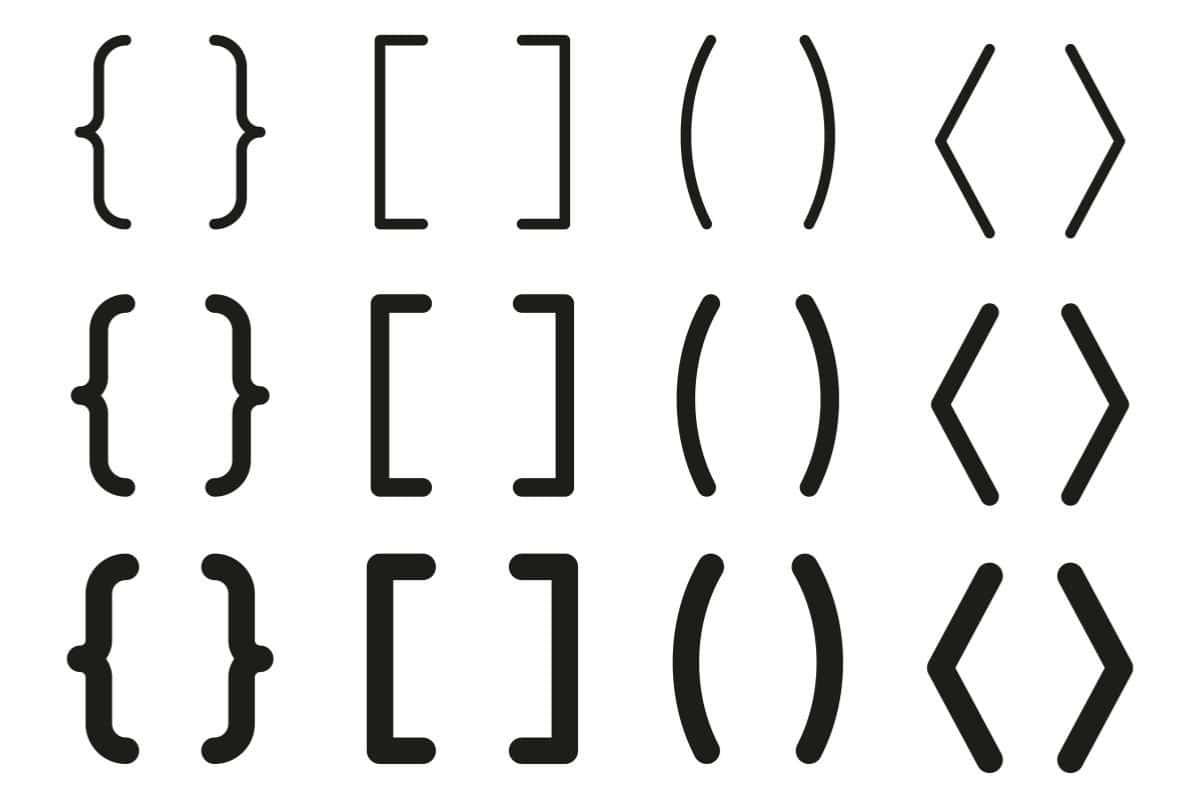Punctuations are the unsung heroes of written language.
Imagine reading your favorite Colleen Hoover with almost non-existent periods, commas, and quotation marks—it would be chaos.
These tiny curved lines and dots help authors express what they want to deliver. The emotion, the narrative, the scene.
This is why punctuation is everything.
But don’t get it twisted—punctuation doesn’t always have to be used that strictly.
If we look at James Joyce’s Ulysses, for example, we’ll see it its 50-page-long stream-of-consciousness rambling at the end with minimal punctuation.
It’s amazing, but unconventional.
While Joyce’s Ulysses masterfully defied convention, most writing—academic, professional, or even casual—relies on precise punctuation for impact.
Among these essential tools, the difference between parentheses and brackets often goes overlooked, yet they serve critical roles in structuring information, adding clarity, and providing context.
The difference between parentheses and brackets might seem trivial at first glance.
After all, they’re both curved symbols that enclose text. But in the world of writing, these small distinctions matter enormously.
Let’s look into the fascinating world of these curved punctuation marks and unravel their mysteries together.
What Are Parentheses and Brackets?
Before we explore their differences, let’s define what parentheses and brackets actually are.
Though they might look similar and serve related functions, they each have distinct identities and purposes in writing.
Definition of Parentheses ()
Parentheses are curved marks that look like this: ( ). They’re among the most common punctuation marks in English writing.


Never Worry About AI Detecting Your Texts Again. Undetectable AI Can Help You:
- Make your AI assisted writing appear human-like.
- Bypass all major AI detection tools with just one click.
- Use AI safely and confidently in school and work.
The word comes from the Greek “parentithenai,” meaning “to put in beside.” And that’s exactly what parentheses do—they insert additional information beside the main text.
Parentheses typically enclose supplementary information that clarifies or provides context but isn’t essential to the main sentence.
Think of them as whispering an extra thought or piece of information to your reader.
They create a conversational element in your writing, allowing you to speak directly to the audience without disrupting the flow of your main text.
For example: The meeting (which lasted nearly three hours) finally concluded with a unanimous decision.
In this sentence, the information about the meeting’s length adds color but isn’t crucial to understanding the sentence’s main point.
Definition of Brackets []
Brackets, also called square brackets, look like this: [ ]. Less common than parentheses, brackets serve more specialized functions in writing.
They primarily indicate editorial changes or additions to quoted material.
When you quote someone directly but need to add clarification or make a minor change for context, brackets are your tool of choice.
They signal to readers that the enclosed text wasn’t part of the original quote but has been added for clarity.
For example: According to the researcher, “The experiment [conducted in 2023] produced unprecedented results.”
In this case, the brackets tell readers that “conducted in 2023” wasn’t in the original statement but was added by the writer for context.
Parentheses vs. Brackets: Key Differences
Now that we understand what each punctuation mark does, let’s explore their key differences.
The distinction isn’t merely aesthetic—it’s functional and follows specific conventions in English writing.
- Purpose: Parentheses add supplementary information to your own text. Brackets modify or clarify someone else’s words that you’re quoting.
- Frequency: Parentheses appear commonly in all forms of writing. Brackets appear primarily in academic, journalistic, and formal writing that involves quotations.
- Independence: Content in parentheses often could stand alone as its own sentence. Content in brackets rarely makes sense without the surrounding quoted material.
- Nesting: When using both in the same context, brackets typically appear inside parentheses, not the other way around.
- Punctuation rules: Parentheses have specific rules about internal punctuation. Brackets follow different conventions, especially regarding periods and commas.
Understanding these differences helps you navigate the subtle art of punctuation with confidence.
Next, let’s look at specific examples of how to use each correctly.
How to Use Parentheses Correctly (With Examples)
Parentheses might seem straightforward, but they follow several important rules that even experienced writers sometimes miss.
Here’s how to use them properly:
- For additional information: Use parentheses to include relevant details that aren’t essential to the sentence’s meaning.
Example: The Eiffel Tower (constructed in 1889) attracts millions of visitors each year.
- For abbreviations and acronyms: When introducing an abbreviation, place it in parentheses after the full term.
Example: The Environmental Protection Agency (EPA) released new guidelines yesterday.
- For asides to the reader: Parentheses can enclose direct comments to your audience.
Example: The process requires careful measurement (don’t worry, we’ll explain how) and precise timing.
- For citations: In academic writing, parentheses often contain citations.
Example: Several studies have confirmed this effect (Johnson, 2022).
- For entire sentences: Sometimes, a complete sentence appears in parentheses.
Example: The concert sold out within minutes. (This wasn’t surprising, given the band’s popularity.)
When using parentheses, remember these punctuation rules:
- If the parenthetical content falls within a sentence, don’t capitalize the first word (unless it’s a proper noun).
- Don’t put a period inside the parentheses unless the entire sentence is inside them.
- If a parenthetical phrase ends a sentence, place the period outside the closing parenthesis.
Mastering these guidelines will help your writing flow naturally while still conveying all necessary information.
How to Use Brackets Correctly (With Examples)
Brackets serve specialized functions and appear less frequently than parentheses. Here’s how to use them correctly:
- For clarification in quotes: Use brackets to add words that help clarify meaning in quoted material.
Example: The witness stated, “He [the defendant] never entered the building.”
- For editorial notes: Indicate your comments or observations about quoted material.
Example: “We won the battle [though historical records dispute this claim] through superior strategy.”
- For errors in original text: When quoting text that contains an error, use [sic] to indicate you’re aware of the error but are preserving the original.
Example: According to the memo, “The company’s polices [sic] will change effective immediately.”
- For omissions: Use ellipses inside brackets […] to show you’ve removed part of a quote.
Example: In her speech, she claimed, “The evidence […] clearly supports our hypothesis.”
- For translations: Provide translations of foreign terms or phrases.
Example: She whispered “au revoir” [goodbye] as she left the room.
Unlike parentheses, brackets rarely stand alone. Parentheses can also set off additional information inside a sentence. (They can even contain whole sentences.)
Meanwhile, brackets almost always appear within quoted material and serve to differentiate the original text from your additions or modifications.
Parentheses vs. Brackets vs. Other Punctuation Marks
While we’re focusing on parentheses and brackets, it’s helpful to understand how they compare to other similar punctuation marks.
This knowledge prevents common mix-ups and expands your punctuation toolkit.
- Braces { }: Also called curly brackets, these appear primarily in specialized contexts like mathematics, computer programming, and music notation. In creative writing, they rarely appear.
Example (in programming): function example() { return value; }
- Angle brackets < >: These serve specific functions in technical writing, HTML code, and some academic notation systems. They’re not typically used in general writing.
Example (in HTML): <p>This is a paragraph.</p>
- Dashes (em dash —): Unlike parentheses, which quietly insert information, em dashes dramatically set apart text. They create stronger emphasis than parentheses.
Example: The concert—a three-hour spectacle of lights and sound—left everyone speechless.
- Commas: Sometimes commas can substitute for parentheses with nonessential information, but they create a different rhythm and emphasis.
Example with commas: The book, published just last year, has already become a bestseller. Example with parentheses: The book (published just last year) has already become a bestseller.
Each punctuation mark shapes your writing’s tone and pacing. Parentheses whisper; em dashes interrupt; commas gently separate.
Choosing between them depends on the emphasis you want to create and the relationship between your main text and additional information, especially when writing complex sentences.
How AI Can Help Improve Punctuation Usage in Writing
Today, artificial intelligence offers powerful tools to enhance our writing skills. AI can analyze punctuation patterns, identify errors, and suggest improvements that human eyes might miss.
This technology has revolutionized the editing process, making professional-quality writing more accessible to everyone.

When it comes to mastering punctuation marks like parentheses and brackets, AI tools can provide instant feedback on your usage.
Undetectable AI’s Ask AI tool is a valuable resource for school projects requiring precise punctuation.
The tool can explain punctuation rules, analyze your sentences, and suggest corrections that align with academic standards.

For more general writing questions, Undetectable AI’s AI Chat provides conversational guidance about punctuation conventions.
Whether you’re writing a business email, creative story, or social media post, this tool helps you navigate punctuation challenges with confidence.
What makes these AI content creation solutions particularly valuable is their ability to recognize context. They understand that punctuation rules can vary slightly between different writing styles and purposes.
The guidance they provide is tailored to your specific writing situation, making them more helpful than generic grammar checkers.
However, remember that AI tools work best as writing assistants rather than replacements for human judgment.
The final decision about punctuation should always reflect your intended meaning and voice.
Also, check out our AI Detector and Humanizer right in the widget below!
FAQs About Parentheses vs. Brackets
When should I use parentheses instead of brackets?
Use parentheses to add extra information to your writing—such as asides, examples, or clarifications that aren’t essential to the sentence. They help maintain a smooth flow without major interruptions.
Brackets, on the other hand, are used to modify quoted material. If you’re clarifying or adding context within a quote, use brackets. If you’re not dealing with a quote, you likely need parentheses instead.
Can parentheses and brackets be used in the same sentence?
Yes, they can, typically when modifying a quote inside a parenthetical aside.
Example: The research team (who later stated “our findings [from the preliminary tests] were inconclusive”) continued with their experiment.
Here, parentheses enclose the aside, while brackets clarify the quote. Use both carefully to avoid confusion.
Are brackets only for formal writing?
Brackets are most common in academic and journalistic writing, where precision in quotations is key.
However, they can appear in any writing that modifies quotes. In casual writing, people often skip them, but in professional settings, they ensure clarity.
Do parentheses change sentence meaning?
Yes, parentheses signal that enclosed information is secondary—important but not essential.
Compare:
The candidate (who previously served as mayor) announced new policies.
The candidate who previously served as mayor announced new policies.
The first suggests the mayoral experience is just background info, while the second makes it a defining characteristic. Use parentheses strategically to control emphasis and sentence structure.
Brackets for Precision, Parentheses for Flow
Mastering the differences between parentheses and brackets might seem like a small detail in the vast landscape of writing skills.
Yet these small details accumulate, transforming adequate writing into excellent writing.
Understanding when to use parentheses versus brackets demonstrates your command of language and respect for your readers.
Remember the key distinction: parentheses add your thoughts to your writing, while brackets add your thoughts to someone else’s writing.
This simple principle will guide you through most punctuation decisions involving these marks.
As you continue developing your writing skills, pay attention to how professional writers use these punctuation marks.
Notice the rhythm they create, the relationships they establish between ideas and the clarity they bring to complex thoughts.
Then, experiment with these techniques in your own writing.
For even sharper, clearer, and more polished writing, let Undetectable AI refine your punctuation, structure, and tone.
Whether you’re adjusting parentheses, clarifying with brackets, or ensuring overall readability, Undetectable AI’s smart tools help perfect your work with ease.
Try it today and elevate your writing effortlessly!
